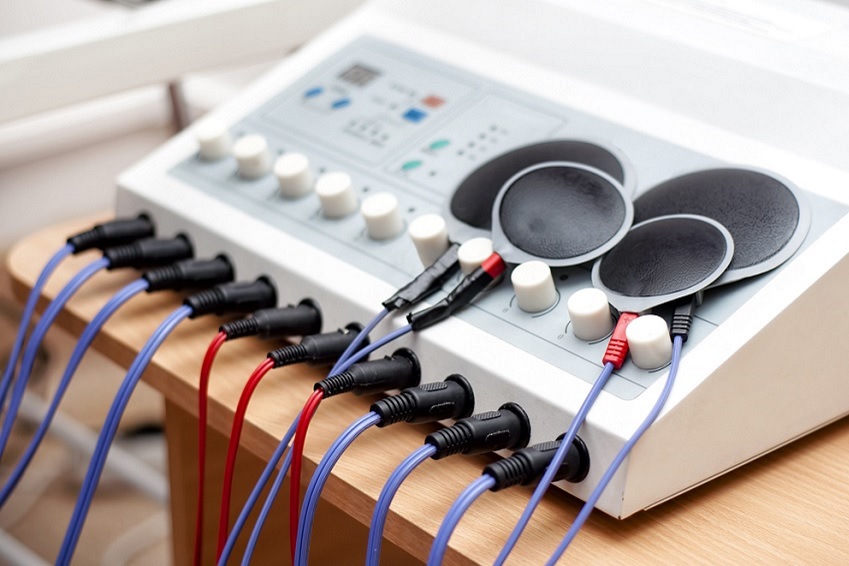Shock! This Treatment Actually Works

McMurphy is forced onto a hospital stretcher and, while lucid and physically restrained, asked to bite down on a mouthguard before having electrical currents sent through his brain, sending his body into a violent seizure.
The depiction in 2001’s light-hearted romp Requiem for a Dream is no less harrowing. You might be shocked to realise then that ECT, described recently by the director of ECT at Mount Sinai Hospital in New York City as the “second most controversial medical procedure” after abortion, is experiencing a resurgence in popularity.
Unlike early depictions, modern day ECT is conducted while the patient is under a general anaesthetic. Patients are also given an intravenous muscle relaxant, which stops convulsions. The underlying principle, however, remains the same: an electrical current is sent through the brain, resulting in a controlled seizure lasting anywhere from 25 seconds to one minute.
ECT is typically used for mental health issues that have proven resistant to other forms of treatment, most commonly severe depression, or psychotic illnesses like schizophrenia. In these cases, there is evidence that ECT can effectively reduce symptoms, making less extreme treatment options more possible.
 Electrostimulative therapies are more common in the medical field than they once were
Electrostimulative therapies are more common in the medical field than they once were
Induced seizures reverse treatment-resistant depressive and psychotic symptoms, but researchers and practitioners seem disconcertingly unsure about exactly how it works. There are a few potential mechanisms which might be responsible, and it may be that all work in some ways and at some times.
One is that ECT increases the release of brain-derived neurotrophic factor, a protein that is reduced in sufferers of major depressive disorder and schizophrenia, and helps to regulate neuroplasticity, aiding in learning and memory. There is some evidence that ECT might change structural aspects of the brain over time, particularly the hippocampus and amygdala.
These parts of the brain are responsible primarily for memory, emotion and pleasure. It has also been shown that ECT alters levels of serotonin and dopamine in the brain, in much the same way as anti-depressant drugs. Given that it is currently being used to treat mental illness, and with no clear mechanism explaining how and why ECT is effective, you might assume that it has little to no serious side effects. Wrong.
The most common side effect of ECT is memory loss. This can be short-term memory loss, for example forgetting what you had for breakfast, which typically resolves within a few weeks to a few months after treatment. ECT can also cause long-term memory loss, for events anywhere from two weeks to six months prior to the treatment. This kind of memory loss is more common following ECT and may also resolve over time but could also be potentially permanent.
Other, less debilitating side effects include muscle pain, headaches, and confusion, as well as the well-known risks of general anaesthesia, most commonly nausea and vomiting.
 Jack Nicholson’s character Randle undergoes shock therapy in One Flew Over the Cuckoo’s Nest
Jack Nicholson’s character Randle undergoes shock therapy in One Flew Over the Cuckoo’s Nest
So, given the serious side effects, and the unclear mechanism of action, you might also assume that ECT quickly reduces symptoms, allowing for medication and counselling to take over. Obviously, wrong again. A typical course of ECT involves two to three treatments a week, for three to four weeks.
The patient may then go on ‘maintenance’ ECT, where treatment is administered at less frequent intervals for any number of months. Symptoms finally under control, the patient will typically begin a course of medication and counselling therapy. Perhaps the final assumption is that ECT is only employed in cases where the alternatives are far worse. And this time, thankfully, it is probably right.
For every barbaric film scene with some poor soul staring dead-eyed into the abyss, there is a real-life testimonial from someone for whom the procedure was literally a ‘lifesaver’. And although still often tarred as either a primitive tool of social control or an outdated psychiatric throwback, the evidence showing positive changes in treatment-resistant cases is persuasive and plentiful.
Given how much remains unknown about how ECT works, and given the potential for devastating side-effects, the use of ECT should be approached with great caution. New Scientist put it best in their recent coverage of the ECT renaissance: “rehabilitating such an extraordinary treatment will require extraordinary evidence.”
Dr Jessica L. Paterson, Senior Research Fellow CQUniversity, Appleton Institute @drjesspaterson